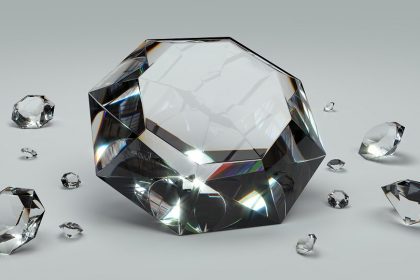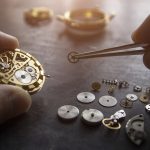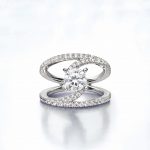Brave New World: Laboratory Grown Diamonds

Get ready to rock
If you haven’t already heard, there is a new advance in technology that will ROCK the world of fine jewelry (pardon the pun). Although the ability to produce diamonds in laboratories has existed for a while, recent advances have led to the ability to produce larger gem quality diamonds in a more cost-effective way. An increasing number of these new lab grown diamonds are hitting the market and they are here to stay.
The market is changing
How will this new product affect the natural diamond market? Speculation is rampant within the trade. Laboratory grown diamonds are real diamonds – as opposed to cubic zirconium or other diamond substitutes – and they are graded using the same criteria as their natural counterparts. Distinguishing the differences between natural and man-made stones requires sophisticated equipment and examination.
At present, the lab stones are generally being sold at retail for approximately 40% less than comparably-graded and -sized natural diamonds. Jewelers are getting more and more inquiries from consumers about lab created diamonds, particularly for use in engagement rings. Many young consumers are attracted to the lower prices and the planet-friendly aspect of the product, being that it is grown in a lab rather than mined from the Earth. At this point, most consumers in the engagement market are still interested in natural stones and the romance associated with having something precious, old and long-lasting to represent their commitment to one another.
Mud in the water
So, what about the downside? Real diamonds… less costly… earth-friendly… people should be getting in line, right? Not so fast. There are a few wrinkles that consumers should be made aware of, particularly relative to the long term. Right now, market prices for laboratory created gems have been set by demand and the group of manufacturers presently in the game. That could change as more players get in to manufacturing. The natural diamond market is controlled to a large extent by DeBeers, who are responsible for a large portion of diamond mining. The lab created diamond manufacturing business is more open with new players entering the arena, including DeBeers. Some in the trade speculate that DeBeers wants to be a major player in the manufactured diamond market so they can exert more competitive pressure, effectively driving the price down on lab created diamonds while at the same time keeping the natural diamond market healthy. Growing this pricing disparity between natural and lab created diamonds may actually serve to make natural diamonds that much more appealing to consumers.
What this means for the consumer
Natural mined diamond wholesale prices have steadily increased over time, which is not only good for DeBeers, but also for consumers. As a purchaser of an expensive product, one would like to know that the value of said product is increasing over time, or at the very least remaining stable. The rub on lab created diamonds is that we don’t yet know where the market will go. Will a consumer buying a 1-carat lab created diamond for an engagement ring today for $3,000 at a certain grade, find the same size and quality stone being sold at $1,500 in six months? If so, how will this affect how people think about this alternative?
A jeweler’s advice
Unfortunately, there is no perfect answer here. The market will form its own ultimate conclusion. Do your homework with your trusted independent jeweler. Only you can decide how to navigate these turbulent waters.
About the author:
Jon Migdow has over 40 years of experience in the jewelry business. His store, TDC Jewelry, has been serving customers across Chicagoland since 1984 and recently moved to a new location in Deer Park, IL.










You must be logged in to post a comment.